+Search query
-Structure paper
| Title | The structure of a triple complex of plant photosystem I with ferredoxin and plastocyanin. |
|---|---|
| Journal, issue, pages | Nat Plants, Vol. 6, Issue 10, Page 1300-1305, Year 2020 |
| Publish date | Oct 5, 2020 |
 Authors Authors | Ido Caspy / Anna Borovikova-Sheinker / Daniel Klaiman / Yoel Shkolnisky / Nathan Nelson /  |
| PubMed Abstract | The ability of photosynthetic organisms to use sunlight as a sole source of energy is endowed by two large membrane complexes-photosystem I (PSI) and photosystem II (PSII). PSI and PSII are the ...The ability of photosynthetic organisms to use sunlight as a sole source of energy is endowed by two large membrane complexes-photosystem I (PSI) and photosystem II (PSII). PSI and PSII are the fundamental components of oxygenic photosynthesis, providing oxygen, food and an energy source for most living organisms on Earth. Currently, high-resolution crystal structures of these complexes from various organisms are available. The crystal structures of megadalton complexes have revealed excitation transfer and electron-transport pathways within the various complexes. PSI is defined as plastocyanin-ferredoxin oxidoreductase but a high-resolution structure of the entire triple supercomplex is not available. Here, using a new cryo-electron microscopy technique, we solve the structure of native plant PSI in complex with its electron donor plastocyanin and the electron acceptor ferredoxin. We reveal all of the contact sites and the modes of interaction between the interacting electron carriers and PSI. |
 External links External links |  Nat Plants / Nat Plants /  PubMed:33020607 PubMed:33020607 |
| Methods | EM (single particle) |
| Resolution | 2.5 - 2.7 Å |
| Structure data | EMDB-10746, PDB-6yac: EMDB-10798, PDB-6yez: |
| Chemicals | 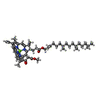 ChemComp-CL0:  ChemComp-CLA: 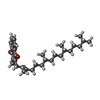 ChemComp-PQN:  ChemComp-SF4:  ChemComp-BCR:  ChemComp-LHG: 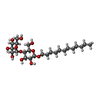 ChemComp-LMT:  ChemComp-LMG:  ChemComp-CA:  ChemComp-DGD: 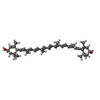 ChemComp-LUT: 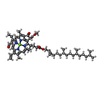 ChemComp-CHL: 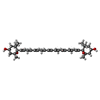 ChemComp-XAT: 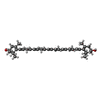 ChemComp-C7Z: 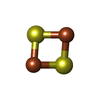 ChemComp-FES:  ChemComp-HOH: 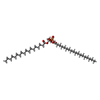 ChemComp-3PH: 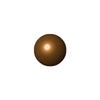 ChemComp-CU: |
| Source |
|
 Keywords Keywords |  PHOTOSYNTHESIS / PHOTOSYNTHESIS /  Membrane complex / Membrane complex /  photosystem I / photosystem I /  ferredoxin / light harvesting / ferredoxin / light harvesting /  excitation transfer excitation transfer |
 Movie
Movie Controller
Controller Structure viewers
Structure viewers About Yorodumi Papers
About Yorodumi Papers








